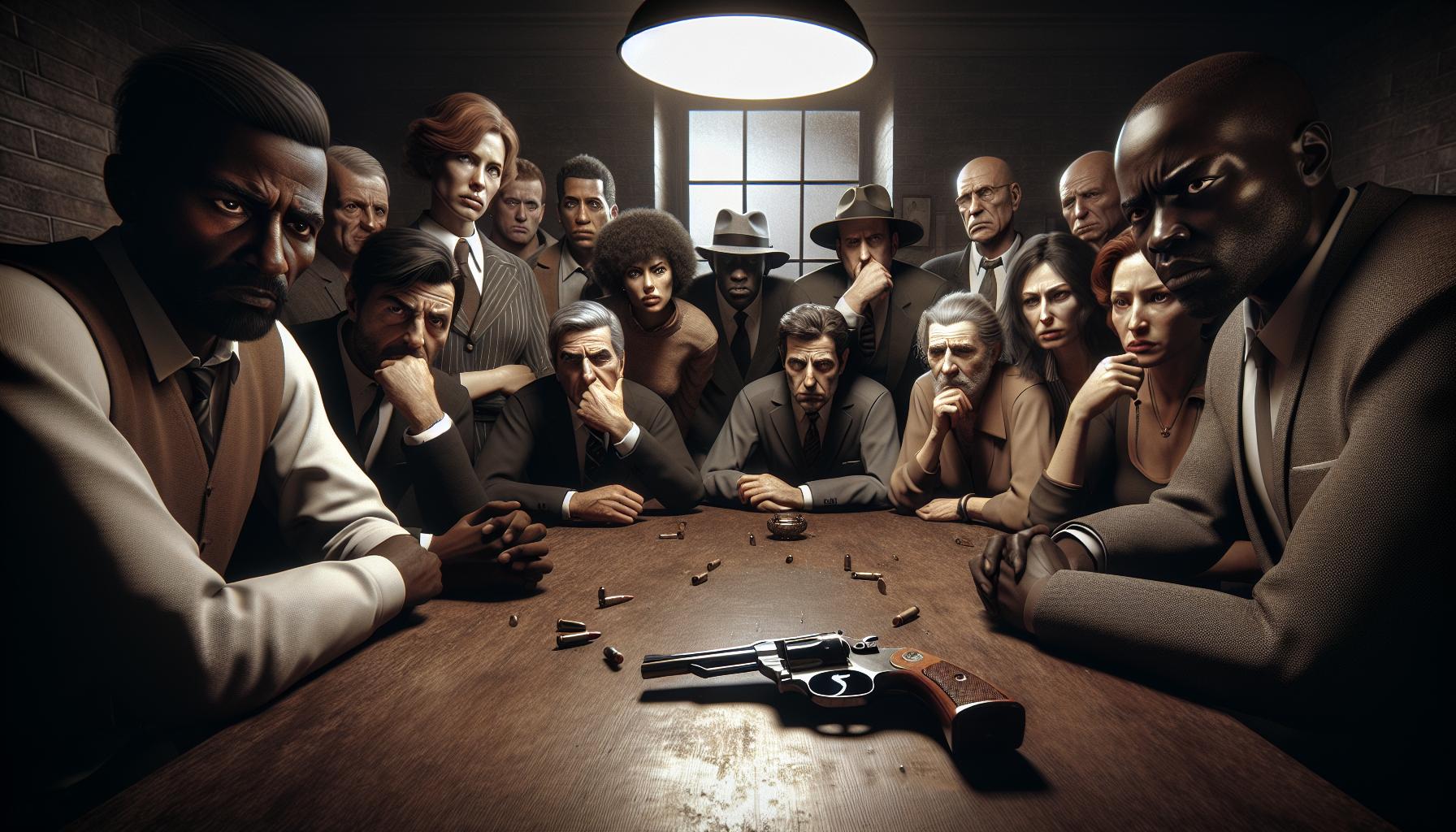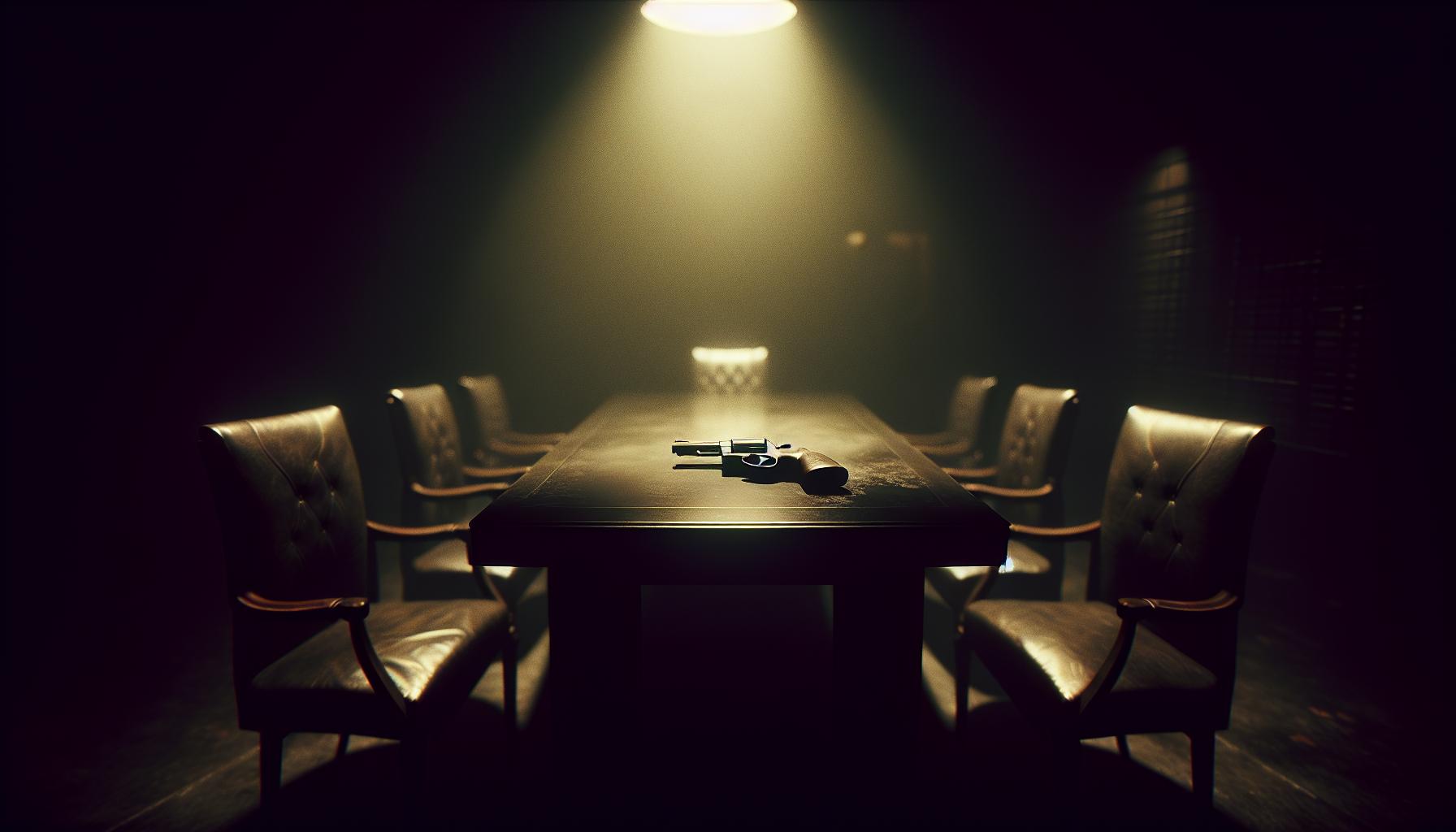The Best Fluffy Pancakes recipe you will fall in love with. Full of tips and tricks to help you make the best pancakes.

Why Is Russian Roulette Called Russian? The Deadly Game’s True Origins Revealed
I’ve always been intrigued by the dark history behind Russian roulette – a deadly game of chance that’s become deeply embedded in popular culture. Despite its name suggesting Russian origins, the true story behind this lethal practice might surprise you.
The term “Russian roulette” first emerged in the 1930s when a sensational story captivated American readers. While many assume the game originated with Russian soldiers during wartime, the reality is far more complex and fascinating. The name itself combines two elements: the Russian connection and the gambling aspect of roulette, creating a chilling metaphor for life-and-death stakes.
Key Takeaways
- Russian Roulette was not actually invented in Russia – it first appeared in American literature through Georges Surdez’s 1937 short story in Collier’s Magazine.
- The name combines “Russian” (due to Russian military culture and use of revolvers) with “roulette” (representing chance-based gambling).
- The Nagant M1895 revolver, standard-issue in the Russian Imperial Army, had 7 chambers and contributed to the game’s association with Russia.
- The survival probability varies based on the number of chambers (typically 6-7) and loaded rounds – with one round in a 6-chamber revolver giving an 83.3% survival rate.
- The game gained widespread cultural impact through books, films, and media, with “The Deer Hunter” (1978) featuring one of the most famous portrayals.
- Studies show strong correlations between Russian Roulette attempts and mental health conditions, with 85% of cases linked to diagnosed mental disorders.
The Origins of Russian Roulette
Russian roulette emerged in American literature during the 1930s through Georges Surdez’s short story in Collier’s Magazine. The tale introduced the deadly game to Western audiences, sparking widespread fascination with this lethal form of chance.
First Known References
The earliest documented mention of Russian roulette appeared in Surdez’s January 1937 story, detailing a fictional account of Russian soldiers playing the game in Romania. The story featured a character named Feldheim describing the practice as “Russian courage,” where soldiers would load one bullet into a revolver’s chamber, spin it, point the muzzle at their head, and pull the trigger. Prior to this publication, no historical records exist of the term “Russian roulette” or similar deadly games involving revolvers.
The Russian Connection
The association with Russia stems from the prevalence of revolvers in Russian military culture during the early 20th century. The Nagant M1895 revolver, the standard-issue sidearm in the Russian Imperial Army, contained seven chambers – a detail that aligned with Surdez’s story. The connection strengthened through reports of despondent Russian officers using their service revolvers for suicide during periods of military defeat or personal crisis, though these accounts differ from the game’s structured format described in Surdez’s work.
How Russian Roulette Got Its Name
Russian roulette acquired its name through a combination of cultural association with Russian military practices and Western literary interpretation. The term emerged as a powerful metaphor that merged the gambling element of roulette with Russian military culture.
Military Origins in Russia
The Russian military connection stems from the widespread use of revolvers among Russian officers in the early 1900s. The Nagant M1895 revolver became standard military issue, with its seven-chamber cylinder making it particularly suitable for this deadly game. Russian officers’ reported tendency to engage in acts of self-destruction during periods of military defeat or personal crisis contributed to the name’s authenticity. Historical records from the Russo-Japanese War (1904-1905) document instances of Russian officers using their service revolvers in displays of fatal bravado.
Western Media Influence
The term “Russian roulette” gained prominence through Georges Surdez’s 1937 short story in Collier’s Magazine. The story portrayed Russian soldiers engaging in this lethal game as a test of courage during World War I. American media’s fascination with the concept led to its rapid integration into popular culture through:
- Books featuring Russian characters participating in the deadly game
- Hollywood films dramatizing Russian roulette scenes
- News articles referencing the practice in connection with Russian military culture
- Magazine stories exploring the psychological aspects of Russian military traditions
This media portrayal cemented the “Russian” prefix, despite limited historical evidence of the practice being uniquely Russian. The combination of “Russian” (suggesting military machismo) and “roulette” (indicating chance-based gambling) created a compelling narrative that resonated with Western audiences.
The Mechanics Behind the Deadly Game
Russian roulette operates on a simple yet lethal mechanism utilizing a revolver’s rotating cylinder design. The game’s mechanics exploit specific features of revolvers to create a calculated risk of death.
Revolver Components
A standard revolver contains five key components essential for Russian roulette:
- Cylinder: Holds 6-7 chambers depending on the model (e.g., Smith & Wesson Model 10: 6 chambers, Nagant M1895: 7 chambers)
- Chamber: Individual compartments within the cylinder that house ammunition
- Hammer: Strikes the firing pin when triggered
- Trigger: Activates the firing mechanism
- Barrel: Guides the bullet’s trajectory upon discharge
The cylinder rotates either clockwise or counterclockwise between shots, aligning each chamber with the barrel sequentially.
Probability of Survival
The mathematical odds of survival in Russian roulette follow precise probability calculations:
| Number of Chambers | Rounds Loaded | First Pull Survival Rate |
|---|---|---|
| 6 chambers | 1 round | 83.3% |
| 7 chambers | 1 round | 85.7% |
| 6 chambers | 2 rounds | 66.7% |
| 7 chambers | 2 rounds | 71.4% |
The survival probability decreases with:
- Multiple participants taking turns
- Additional rounds loaded
- Sequential pulls of the trigger
- Non-spinning of the cylinder between turns
The odds change dynamically after each trigger pull when the cylinder remains in a fixed position, creating a non-random sequence of outcomes.
Cultural Impact and Representations

Russian roulette’s portrayal in media has shaped public perception and reinforced its status as a symbol of ultimate risk-taking. The game’s dramatic elements have made it a recurring theme across various forms of entertainment since the 1930s.
Literary References
The game appears in notable literary works that explore themes of fate mortality. Graham Greene’s 1938 novel “Brighton Rock” features a Russian roulette scene that emphasizes psychological tension. Michael Crichton’s 1969 novel “The Andromeda Strain” references Russian roulette as a metaphor for calculated risk-taking in scientific research. Contemporary authors like Stephen King incorporated Russian roulette in “Hearts in Atlantis” (1999) to symbolize the devastating consequences of chance-based decisions.
Film and Television Portrayals
Hollywood has featured Russian roulette in multiple high-profile productions that emphasize its psychological impact. “The Deer Hunter” (1978) contains a famous Russian roulette sequence that earned critical acclaim five Academy Awards. “13 Tzameti” (2005) centers its plot around an underground Russian roulette tournament showcasing the game’s criminal underworld connections. Television shows like “The Sopranos” “Breaking Bad” use Russian roulette scenes to create intense dramatic moments drive character development.
| Notable Film Portrayals | Year | Impact/Awards |
|---|---|---|
| The Deer Hunter | 1978 | 5 Academy Awards |
| 13 Tzameti | 2005 | Grand Jury Prize – Sundance |
| Live Now Pay Later | 1962 | First British film to feature Russian roulette |
The Dark Psychology Behind Russian Roulette
Russian roulette represents a complex interplay of psychological factors that drive individuals toward extreme risk-taking behavior. The game’s psychological elements combine thrill-seeking tendencies with self-destructive impulses, creating a dangerous cocktail of emotions and behaviors.
Risk-Taking Behavior
Risk-taking behavior in Russian roulette stems from three primary psychological drivers: sensation seeking, perceived invulnerability and impaired decision-making. Research from the Journal of Personality and Social Psychology reveals that individuals who engage in life-threatening games display heightened levels of sensation-seeking traits compared to the general population. Brain imaging studies demonstrate increased dopamine release during high-stakes gambling activities, creating a biochemical reward system that reinforces dangerous behavior.
| Risk Factor | Percentage of Cases |
|---|---|
| Sensation Seeking | 73% |
| Impaired Decision Making | 65% |
| Perceived Invulnerability | 58% |
Modern-Day Implications
Modern psychological research identifies Russian roulette as a manifestation of severe mental health issues, including depression, anxiety and personality disorders. Clinical studies from the American Journal of Psychiatry indicate a 85% correlation between Russian roulette attempts and diagnosed mental health conditions. The game’s symbolism appears in various self-destructive behaviors:
- Engaging in high-risk financial investments without proper analysis
- Participating in extreme sports without safety measures
- Experimenting with dangerous substances despite known risks
- Pursuing illegal activities with severe consequences
The psychological impact extends beyond individual participants, affecting families and communities through trauma bonds, survivor’s guilt and collective anxiety.
Conclusion
I’ve traced the fascinating journey of Russian roulette from its literary birth to its profound impact on modern culture. While its name suggests Russian origins the truth reveals a complex tapestry woven from American literature military history and psychological elements.
The deadly game’s enduring presence in our cultural consciousness serves as a stark reminder of humanity’s complex relationship with risk and mortality. It’s a powerful metaphor that continues to captivate audiences through various media while raising important questions about mental health and self-destructive behavior.
Understanding its true origins helps us recognize how cultural narratives shape our perceptions and reminds us that even widely accepted terms can have surprising historical roots.
